It’s impossible to know why these things happen. They can’t be planned for or expected yet I’ve been experiencing more than my share of these types of events since starting this archive and I couldn’t be happier about it. This is simply the latest. I hope talking about it doesn’t bring my lucky streak to an end. Not that I’m superstitious, mind. But I don’t want to take any chances. Be kind, ye fates!
So anyway, I had a memory pop up awhile back, this is back in October of last year. During my first semester at San Jose State back in 1979, I remember the team going into a screening room at the school to watch some fencing. I don’t recall if it was on film or videotape. This was prior to videotape being common, so if it was on video I don’t know what format it would have been on. But whatever media we watched it on, I mostly remember the subject matter. We watched the Men’s Foil finals from the 1976 Olympic Games that were held in Montreal, Canada.
That’s my first year team photo from San Jose State. All of these people are suspected of having watched the ’76 Olympic footage with me. Anybody else remember?
This was only the second time for me seeing International-level fencers going at it. My first coach, Len Carnighan had attended the 1979 Junior World Championships at Notre Dame and came back with the Men’s Foil finals from that tournament – on black & white videotape! (Check some of it out here!) He had it transferred to a tape we could check out from the Resource Library at Cabrillo College and I most definitely did, many, many times. This Olympic footage Michael D’Asaro got his hands on was in color and very well shot. I can only assume it was TV coverage since there were titles and graphics. I also know it never showed up on any of the coverage in the US. Fencing never got a hint of coverage that I remember prior to 1980, and the 1980 coverage was only about Soviet foilist Vladimir Lapitsky collapsing on the strip after a broken blade went through his lame and jacket. (Not for the squeamish, but available on YouTube here at the 9:36 mark.)
There were some great bouts as I recall from my long-ago memory of watching in 1979 but it was the fencing of the eventual winner, Fabio Dal Zotto, that stood out. His daring approach to his bouts, his speed and running attacks, all made a big impression. He and Alexandre Romankov both went 4-1 in the final pool of 6. Yes, that’s how they did it back then. Not to mention touches were scored against you, so having your name called by the Director was not good news. Anyway, Dal Zotto and Romankov had to fence off for the Gold medal and the Italian carried off the top prize at just 19 years of age. There were a couple of old-guard fencers in the final, including Bernard Talvard of France and Vasly Stankovyich, another Soviet fencer. Both fenced in terrifically classic style, beautiful to watch. All of the younger finalists, the last two being Frederic Pietruszka of France and Australia’s Greg Benko, were poised more like fighters. Well, maybe not Alexandre Romankov. He leans a bit more classical I think, but his fencing style is so uniquely his that it’s hard to put a name to it.
Since it’s recorded in all the history books, I’ll assume I’m not giving away the story to say that the above, Fabio Dal Zotto of Italy, won the Olympic Gold Medal in 1976. He was just 19 years old when he won, his birthday occurring four days before the event.
For all that, the fencer who I really remember from that viewing was the 24 year old from Australia, Greg Benko. He finished sixth of six in that final but was in every bout and took a couple of them to 5-4. He was then, and remains today, the only Australian fencer ever to make an Olympic fencing final. He’d picked up an International victory the year before this Olympics, winning the New York Martini & Rossi, and another in 1982 at the Paris Invitational. He won Australian championships and Commonwealth Games and made four Olympic teams for his home nation.
What’s with all the talk about an Australian on the West Coast Fencing Archive, you’re no doubt wondering? Well, here’s the story.
In 1977, Michael D’Asaro and Charles Selberg had the very first edition of their fencing summer camps at San Jose State University. They’d invited another coach to join them as well; Heizaburo Okawa. In 1977, Heizaburo was less than ten years removed from his last National Championship victory, shortly after which he’d turned professional. Okawa had his own successes as an International competitor and was at one point ranked 10th in the world in foil. Greg Benko, as I remember the story, had spent that summer driving all over the US in a giant old Cadillac and had found his way to San Jose for the summer camp. Maybe that was a different summer. Someone told me that story a long time ago. Anyway, he was at the camp.
The coaches at the 1977 pre-Nationals camp, from left to right, Charlie Selberg, Michael D’Asaro and Heizaburo Okawa.
Len Carnighan, my first coach, was just beginning his teaching career in 1977, and he was also at the summer camp. He’s the one that told me the story about the climactic event that summer. Apparently someone came up with the idea that the final event of the camp would be a bout between recent Olympic finalist Greg Benko and still-in-really-good-shape fencing master Heizaburo Okawa. As Len told it, the expectation was that Okawa would give a good performance, but Benko’s youth and Olympic experience would win out. Benko would have been around 25 and Okawa 38 years old. The end result of this match proved to be rather different. Apparently Okawa took Benko to school. Or the woodshed. Anyway, not the result people expected and, again according to Len “Here, Let Me Exaggerate That For You” Carnighan, not at all what Greg Benko was expecting.
Greg Benko, pictured with Vinnie Bradford, at a party during the 1977 summer camp. Seventies hair and puka shells. That’s how we all rolled back then.
Let’s get back to the actual topic of this thread, which was, if you’ll recall, how fortunate I am. When the memory of watching that 1976 Olympic final came to mind, I reached out to some of my then-teammates to see if anyone else remembered seeing it and/or, did anyone by any chance have a copy of it. Michael D’Asaro wasn’t stingy with his videotaped fencing material and I dupe’d one tape he’d shot at the 1981 World University Games. So I don’t think I was too far off base to check and see if someone had this. But, alas, no. My main hope had been that Greg Massialas might have it but he confirmed that he did not.
Fast forward to a few weeks ago. I’ve been having conversations recently with Juan Ignacio Calderon, the new head coach at UC San Diego, about the history of that program and helping them sort through some material. He was kind enough to send me a box of VHS tapes that were sitting around collecting dust as VHS tapes tend to do these days. I’ve built myself a system to transfer those old tapes into a digital format for computer viewing. Since I can, I volunteered to transfer the UCSD tapes. The first task for a job like this is to make a list of all the tapes. Going through the box checking the labels one tape at a time and finding several from dual meets and other UCSD-specific material, I picked up one that was titled “1976 Olympics: M/W Foil”.
What?!
Fortunately, I didn’t break my neck getting from my office upstairs to the table downstairs where I’d set up my video transfer system. I plugged the tape into the deck, opened up iMovie (I have to use an old Mac Mini to get this system to work. Slow, sure, but it works.) and pressed ‘play’. The first part of the tape was very worn and the tracking was so bad it wouldn’t really show much other than snow and streaky video noise. That was a very sad moment. My fear was I’d get nothing off the tape. Hoping that perhaps the first part of the tape had taken the worst beating, I fast forwarded to a few minutes in. Sure enough, the Women’s Foil finals of the 1976 Olympics showed up! It’s watchable! The tracking goes in and out a bit and the audio seems to have become unstuck in time and is playing ahead of the picture. But it’s watchable, for sure. The women go on for about 40 minutes. Then, without warning, and not at the end of the women’s final, we switch over to the men’s final, already in progress. In a way, it’s the worst of all worlds. Because of the bad tracking the beginning of the women’s final is cut off, plus we don’t see it to the end. Then the men’s final starts up already in progress, although it does go all the way through to the end of the pool – and also has the fence-off for the gold between Romankov and Dal Zatto. It comes to a very abrupt end right as Dal Zotto is getting a kiss on the cheek from teammates but the bout is all there. Still, beggars can’t be choosers. I’d have been happy with a single bout, and here I have a good amount of both finals. Since today’s story is all about the Men’s final, rest assured I’ve got another tale to tell about the Women’s final at a later date. And yes, I can relate that one to the West Coast also!
The Romankov sports trading card. Tough to find this one but if you haunt eBay long enough, you may get lucky.
So go figure! Somehow the Fencing Archive angels have smiled upon me and delivered into my hands the very footage I was thinking about 6 months ago. Watching the matches, it’s very interesting to see how much the sport has changed. The game was played at a much, much slower pace, no doubt in part because the bouts had twice as much time on the clock. And officiating takes a beating since there was no recourse for a bad call like we now have with on-strip instant replay. Bad calls stand. Too bad for you, Vasyl Stankovyich. I thought you beat Dal Zotto but the breaks didn’t go your way.
The only photo I have, courtesy of Andy Shaw, of Soviet foilist Vasyl Stankovyich, 3-time Olympian, Silver Medalist, and individual and team World Champion in foil.
Other changes are obvious, like Benko ducking his head. He’s not parrying with his mask but on some of his hard and fast attacks, he drops his head. Knowing he doesn’t have a strap on the back of his mask to hold it onto his head makes it looks like a terrifyingly dangerous action. Covering target while infighting is rampant. Nobody gets hit in the back, flick or otherwise. However, I think the biggest difference is the lack of control of the bouts on the part of the Directors. Fencers are, at best, casually on guard. Sometimes not even that. The on guard lines are mere suggestions. The distance between fencers on start up between touches is super close and everybody is moving around prior to the command ‘allez!’ In one match after a meter warning – this was the 70s, remember – the fencer who should have been behind the on guard line has both feet in front of it, but hey, “Pret? Allez!” I was very surprised both how much I noticed these things and how much they bothered me. It really made me appreciate the positive changes that have been made to officiating, both from a qualitative point of view and a technological one. Directors, sorry, Referees are much better trained today, and the use of the replay adds a backstop that wasn’t available to previous generations of fencers who knew, without exception they knew, they’d been ripped off. Oh yeah. We knew.
Wait, what am I doing? If a picture is worth a thousand words, what’s a moving picture worth? Let’s watch some bouts! Keep in mind, this is from a VHS tape that’s over 40 years old. The tracking flips a bit and the colors shift around, but you can still see what’s happening.
First up, this bout features the 19 year old Italian Fabio Dal Zotto against Vasyl Stankovych from the Soviet Union, another in the continuum of Ukrainian greats. At this point in the final, Stankovych has lost to Talvard of France and his teammate Romankov, with one victory against Benko from Australia. Talvard and Pietruszka, also from France, both have two victories with one bout to go, so dropping this is going to make medaling unlikely for Stankovych. Meanwhile, Dal Zotto is undefeated, beating both Romankov and Pietruszka 5-1, while Benko took their bout to 5-4.
Next up, Alexandre Romankov versus Greg Benko. It’s the final bout for both. Romankov has one defeat against Dal Zotto, who also has one bout left. Benko doesn’t have any victories but has been in every bout and shown tremendous fight. Nobody has pushed him around.
Wouldn’t you know? A fence-off for Gold! Dal Zotto loses his last bout in the final to Talvard 5-4, forcing a rematch with Romankov. Here is that final bout!
And the winner:
1976 Olympic Gold Medalist, Men’s Foil Individual, Fabio Dal Zotto.
So that’s the story. It’s a little convoluted, sure, but that’s how I seem to roll.


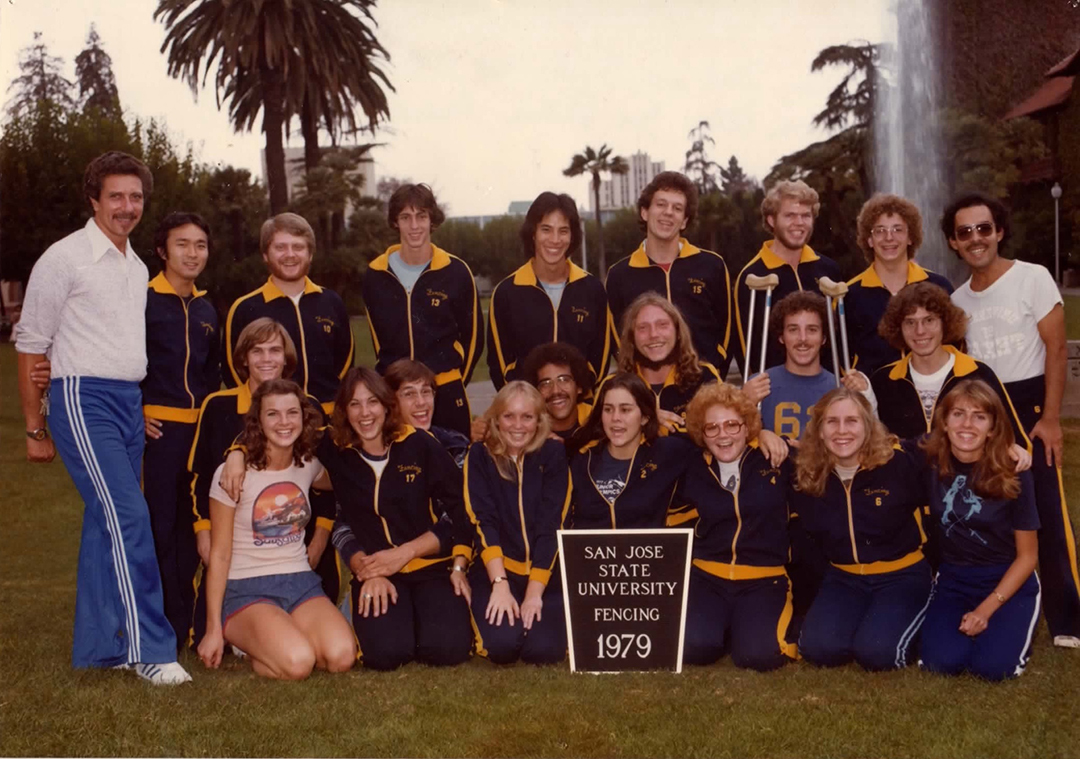
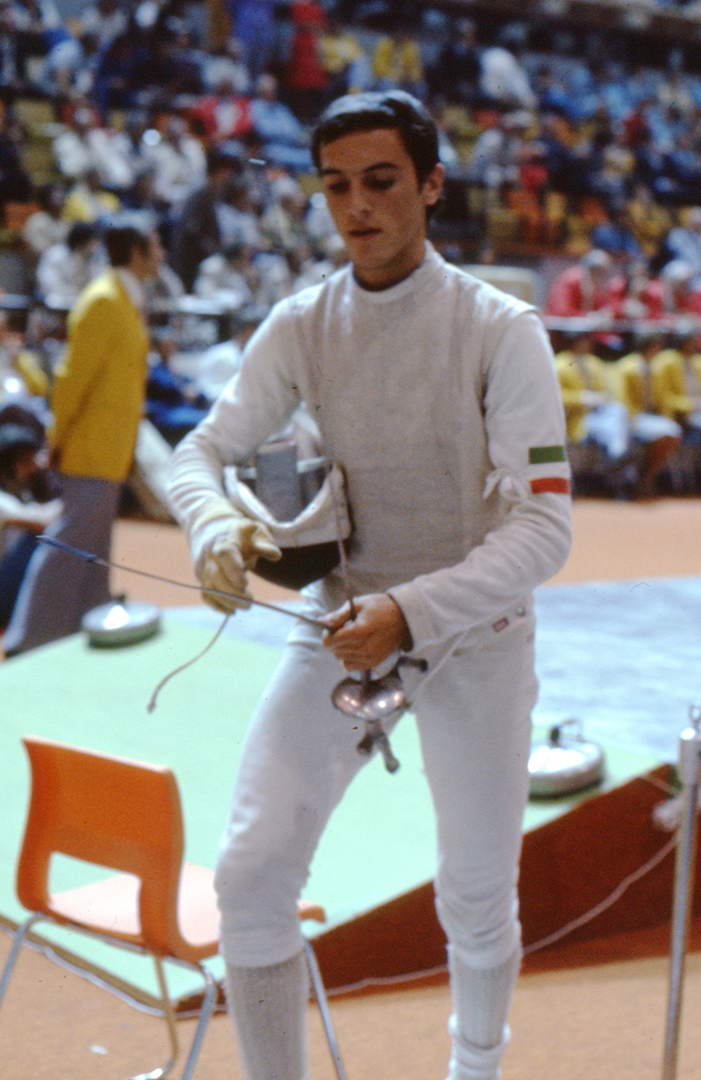
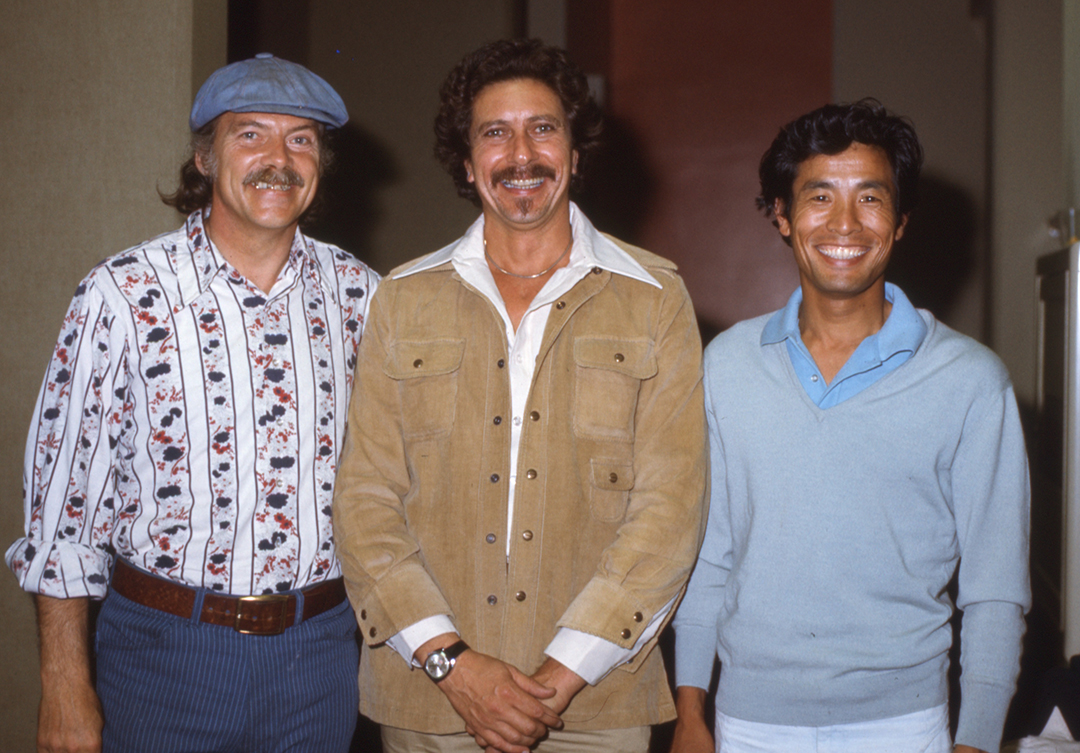
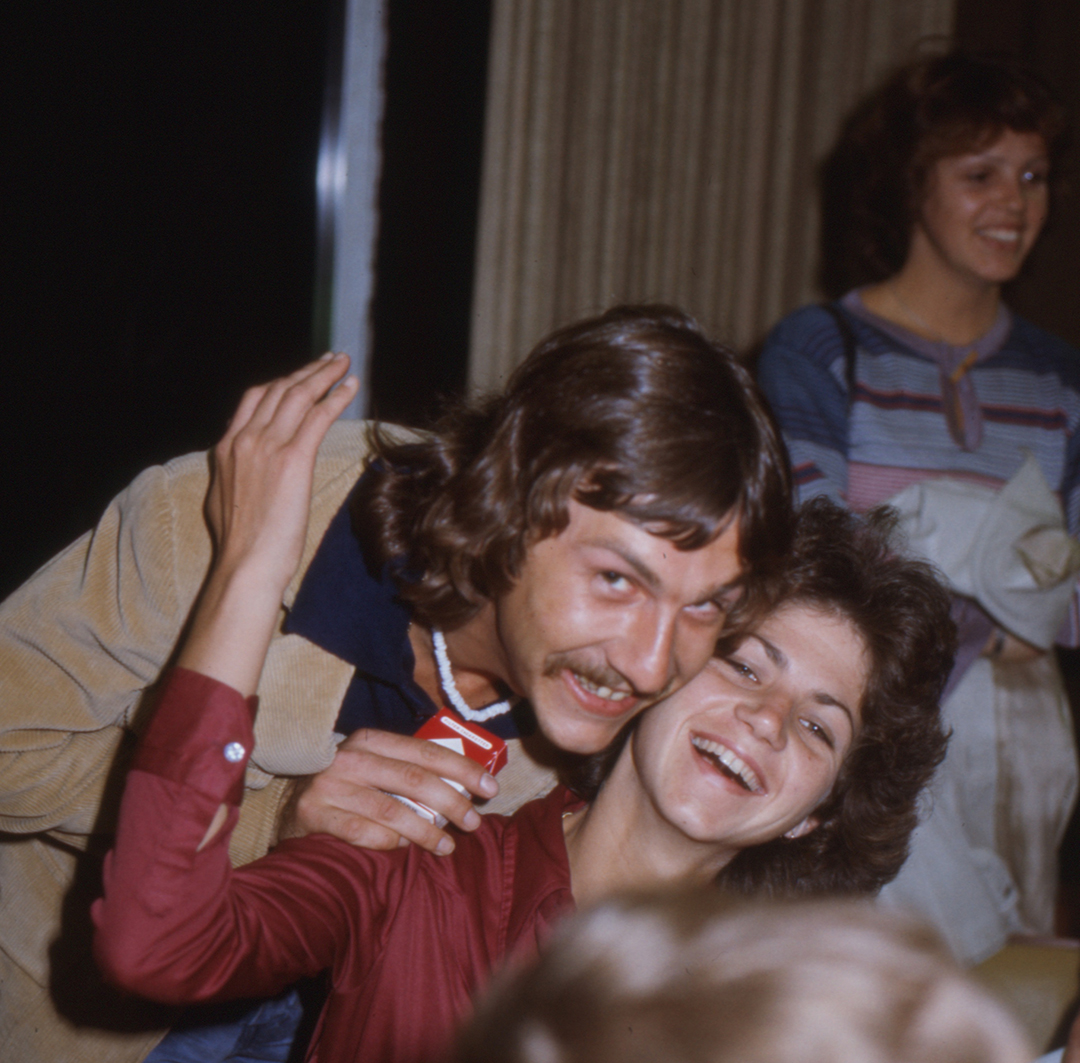
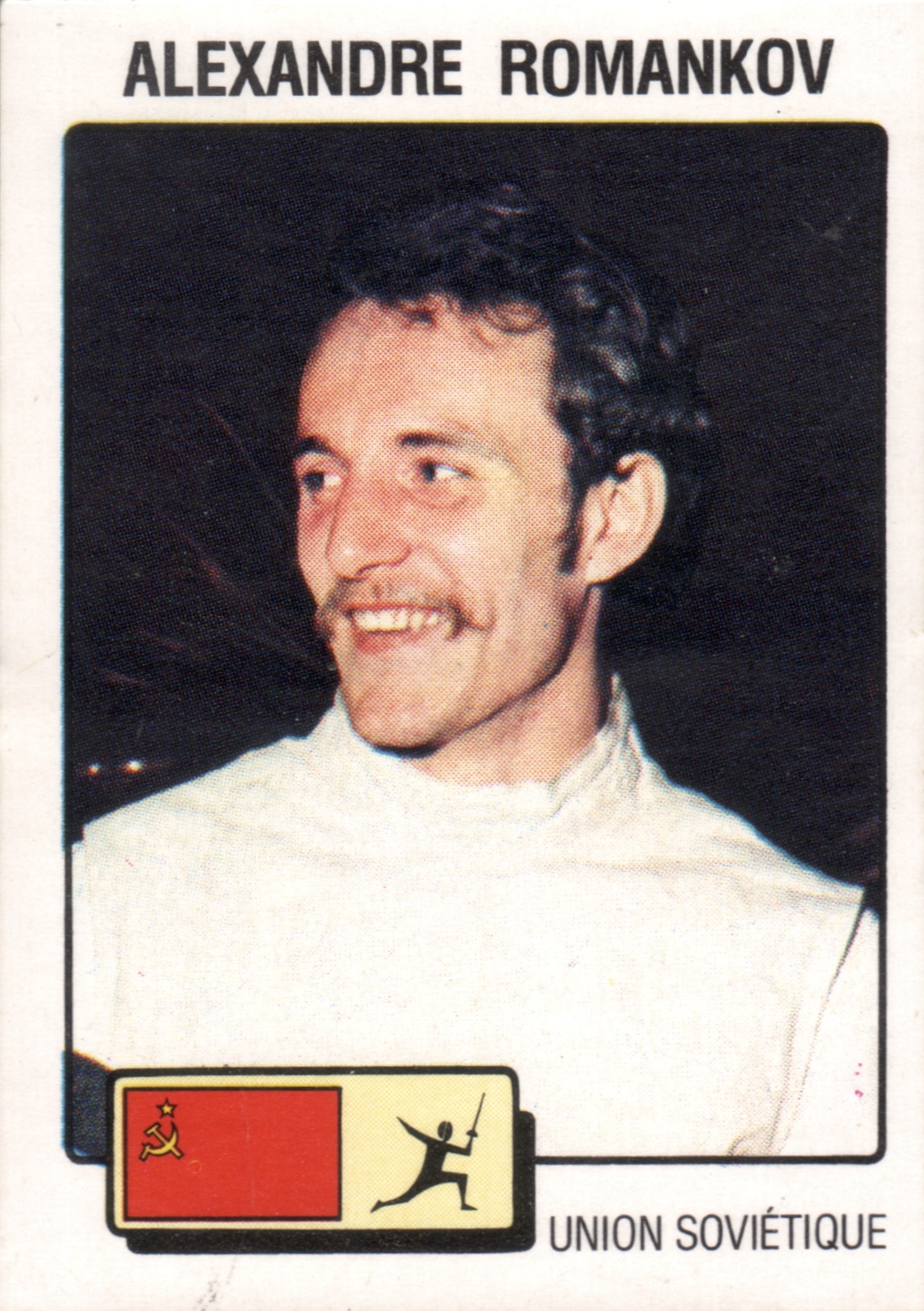
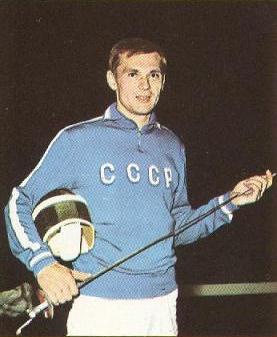
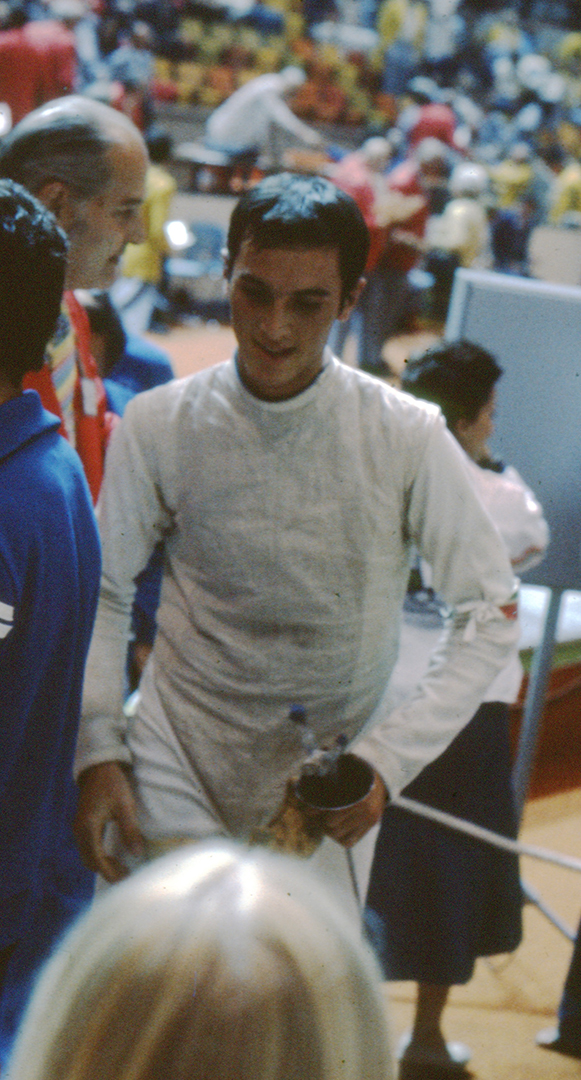
Bro
SPARTANS BABY….
I don’t remember watching those videos. Maybe us saber guys weren’t allowed…
I do remember Stro’s huge camcorder. I was one of the only ones he let use it, only in his presence. I studied T.V and Video in high school. We had a full studio set up. I was also the Audio Visual captain of my Junior High got the medal to prove it. And studied film in high school.
The team picture fills me with pride, joy and memories of that magical time and teammates. And the fact that many of us are still connected is beautiful. Keep up the great work bro. Love ya
Richie
Wonderful!
Loved learning more about some of the beautiful people I have been blessed to meet through fencing.
Thanks!